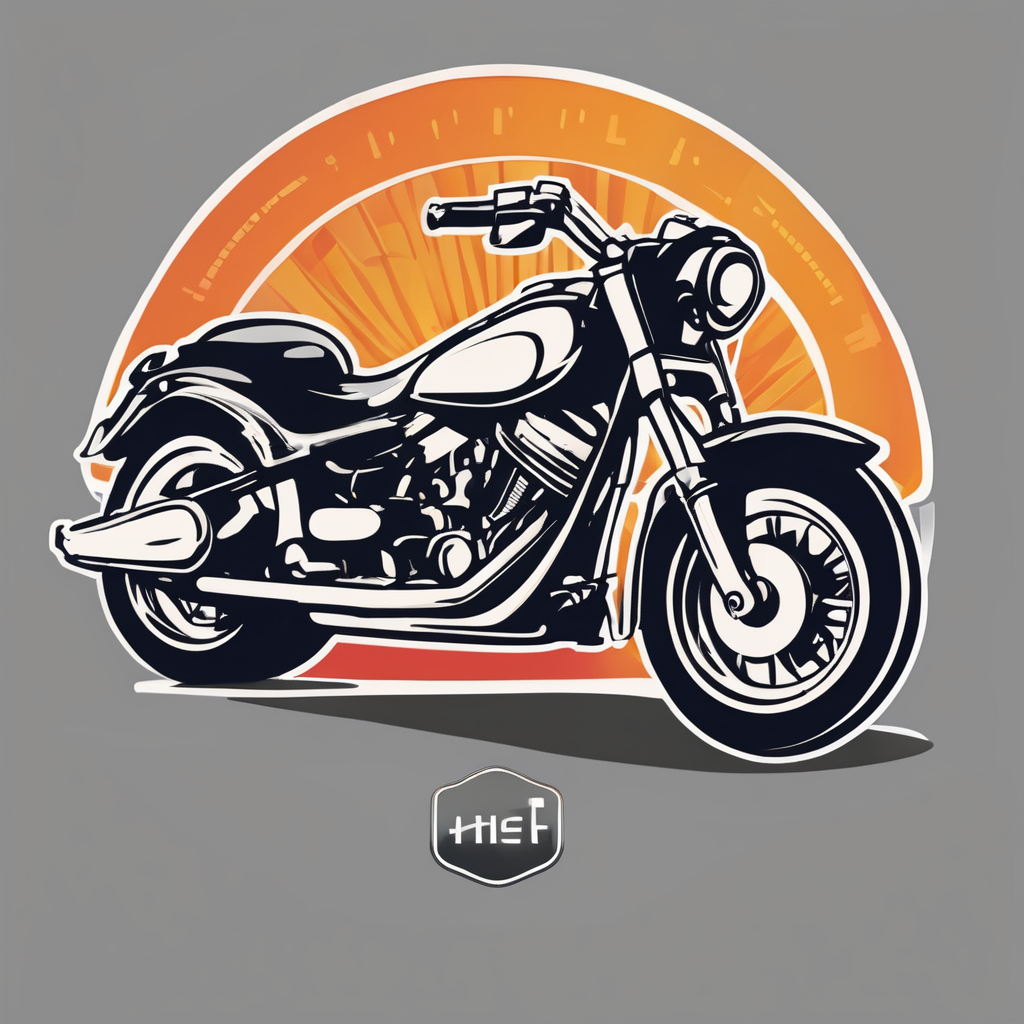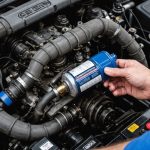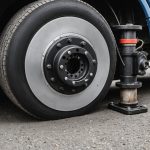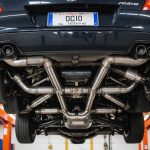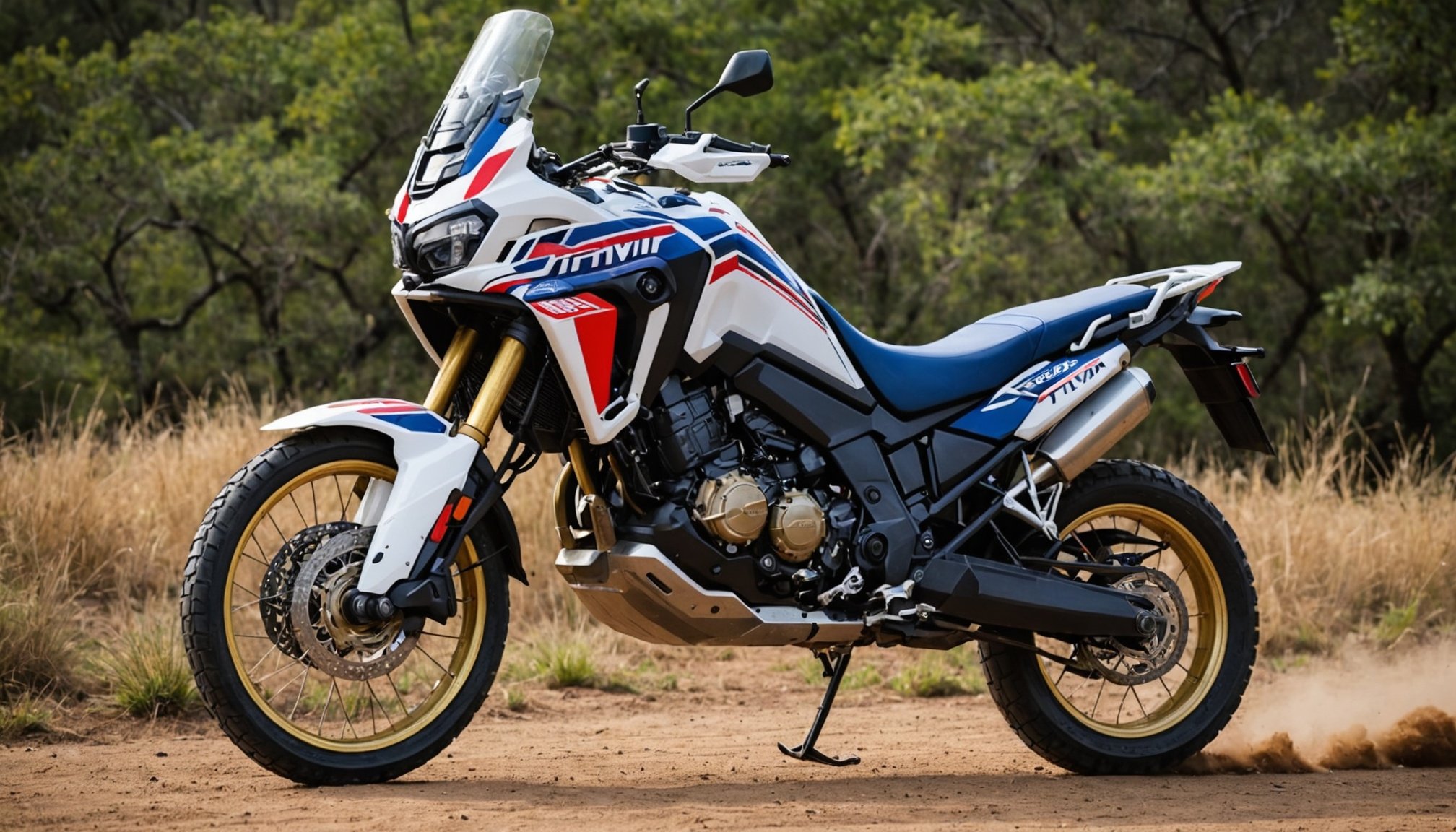Overview of Brake Fluid Maintenance
Maintaining the brake fluid in a motorcycle brake system is vital for safety and optimal performance. Regular brake fluid maintenance ensures the efficacy of the brake system, enhancing the riding experience of your Honda Africa Twin.
Why is regular brake fluid check important? Clean and sufficient brake fluid allows for smooth operation and prevents air bubbles, which can cause brake failure. The Honda Africa Twin features advanced brake system components that rely heavily on proper fluid maintenance to function efficiently.
Also to discover : Essential Guide: Key Steps to Properly Maintain the Drive Chain of Your Ducati Scrambler 800
If brake fluid becomes old or contaminated, it deteriorates, hindering brake responsiveness. This can lead to a spongy feel when applying brakes, reducing stopping power. To prevent this, it’s crucial to schedule regular inspections and replacements as recommended by the manufacturer.
The Honda Africa Twin is equipped with features that ensure rider safety, such as dual hydraulic brakes and ABS support. Each element within this motorcycle brake system, from the calipers to the brake lines, depends on clean and effective brake fluid for seamless operation. Keeping these components in top condition requires attention to the fluid’s state. Regular maintenance helps in preventing major brake failures and extends the life of the motorcycle’s braking system.
Also read : Mastering Your Suzuki GSX-R1000: Essential ABS Adjustment Settings Explained
Required Tools and Materials
Embarking on a brake fluid change requires the right set of tools and materials to ensure utmost precision and safety. It’s crucial that you understand the essentials for a seamless motorcycle maintenance process.
Essential Tools
When changing brake fluid, having the appropriate motorcycle maintenance tools is key. For a Honda Africa Twin, these include a brake bleeder kit that works effectively with its unique system. Pliers, wrenches, and a collection container are also indispensable. These tools ensure you can release old fluid and apply new fluid without leaks.
Recommended Brake Fluids
Choosing the right brake fluid is vital. For a Honda Africa Twin, compatible brake fluids include DOT 4 and DOT 5.1. Both types offer excellent performance, but they differ slightly in boiling points and viscosity. Always consult your manual for verified compatibility.
Safety Gear
Safety gear is paramount during brake fluid changes. Ensure you’re equipped with gloves, goggles, and possibly an apron. Brake fluid is corrosive and can damage skin or eyes, so protecting yourself mitigates these risks. Additionally, a well-ventilated workspace helps in avoiding inhalation of noxious fumes.
By preparing with these necessary tools and materials, maintaining your Honda Africa Twin becomes more manageable and safe.
Step-by-Step Instructions for Inspection
Brake fluid inspection is a vital part of Honda Africa Twin maintenance to ensure your bike’s safety and efficiency. Locating and accessing the brake fluid reservoir is straightforward. It is usually situated near the handlebars or under the seat. Refer to your owner’s manual for the exact location, as it can vary depending on the model.
Once you’ve identified the reservoir, inspect the brake fluid through the transparent container for visual indicators of brake fluid quality. The fluid should be clear or slightly yellowish. Discoloration, especially a dark or murky appearance, can signal contamination or degradation.
Common issues you might encounter during inspection include low fluid levels, which can compromise braking performance, and the presence of debris or sediments within the fluid. These factors could indicate a need for replacement or further maintenance.
Keep an eye out for rubber seals around the reservoir, too. Any swelling or damage may mean the seals are reacting with the brake fluid, necessitating professional attention. Regularly checking these aspects of your brake fluid can prevent hazardous braking situations and maintain the optimal functioning of your Honda Africa Twin.
Step-by-Step Instructions for Changing Brake Fluid
Proper motorcycle maintenance is crucial for ensuring safety and performance. One of the key tasks is the Honda Africa Twin brake fluid change. Follow these steps to effectively change your brake fluid.
Preparing for the Change
Before beginning the process of changing brake fluid, gather the necessary tools and materials. Ensure you have fresh brake fluid that matches your motorcycle’s specifications. Remember to wear protective gloves and goggles to guard against spills. Position your motorcycle on a level surface, using a stand if available, to maintain stability during the procedure.
Draining Old Brake Fluid
Start by locating the brake fluid reservoir on your Honda Africa Twin. Use a clean cloth to wipe any debris on the reservoir cap before removing it. Attach a clear plastic tube to the brake calliper’s bleed valve, ensuring the other end is placed into a waste container. Open the valve slightly. Gradually squeeze the brake lever to drain old brake fluid completely, taking care to top up the reservoir as needed to prevent air from entering the system.
Refilling with New Brake Fluid
After the old fluid is drained, refill the reservoir with new brake fluid. Keep the reservoir open, squeeze the brake lever and open the bleed valve to expel air bubbles. Continue until the brake lever feels firm. Close the valve and ensure the reservoir is sealed tightly. Double-check the system to confirm that no air is present and that the fluid level is adequate.
Safety Tips and Precautions
When it comes to ensuring Honda Africa Twin safety, understanding and handling brake fluid is crucial. Brake fluid is an essential component of your motorcycle’s braking system but it poses certain hazards if not handled correctly. This fluid is highly corrosive and can damage paint, skin, and even eyes. Thus, motorcycle safety tips emphasize the importance of wearing protective gloves and goggles while handling it.
One golden rule of brake maintenance safety is to ensure no brake fluid spills onto the painted surfaces of your bike. If a spill occurs, quickly wash the area with water to minimise damage. It’s advisable to work in a well-ventilated space to prevent the fumes from affecting your respiratory system.
Emergency measures play a vital role in managing accidental spills. If brake fluid makes contact with your skin, immediately rinse the area with soap and water. Should it get into your eyes, flush them with copious amounts of water and seek medical attention.
To enhance safety, always store brake fluid in tightly sealed containers and away from extreme temperatures. Following these practices not only ensures your safety but also contributes to the longevity of your motorcycle’s braking system.
Troubleshooting Common Issues
Navigating through brake issues troubleshooting in the Honda Africa Twin can often feel daunting. Yet with a little knowledge, riders can address common problems efficiently.
Low Brake Fluid Alerts
A common issue is low brake fluid. To identify this, regularly check the brake fluid reservoir for markings indicating the fluid level. If the level is below the minimum mark, a refill is necessary. Ensure you use the recommended brake fluid specified in the vehicle manual to prevent any mismatches, avoiding further brake fluid problems.
Air in Brake Lines
Air bubbles in brake lines impede proper braking. You might notice a spongy pedal or delayed braking response. To troubleshoot this in the Honda Africa Twin, performing a brake bleed can effectively remove air. Use a clear tube and a jar to catch escaping fluid, ensuring a tight seal to prevent new air from entering the system.
Leak Detection
Brake fluid leaks can lead to significant safety issues. Signs include stains under the bike or reduced braking power. Regularly inspect the brake lines, calipers, and master cylinder for moisture or damage. If a leak is detected, it’s crucial to replace the affected parts promptly to restore full braking function. Addressing these brake issues troubleshooting steps will ensure safe and reliable riding.
Maintenance Frequency and Best Practices
When it comes to the Honda Africa Twin, adhering to a strict brake fluid maintenance schedule is paramount for safe and efficient riding. It is generally recommended that brake fluid inspections occur every 12,000 miles or every two years, whichever comes first. Regular changes should follow a similarly diligent approach, ensuring that the fluid remains effective.
Incorporating best practices into your motorcycle care routine can significantly extend the life of your brake fluid. Start by maintaining a clean working environment when handling the brake system. Any contaminants accidentally introduced can cause performance issues. Use only recommended types of brake fluid, as specified in the manual provided with your Honda Africa Twin.
Keeping meticulous records of all maintenance performed fosters a systematic approach to motorcycle care. Every change and inspection records the condition of the fluid and any observations—even minor ones. These logs can prove invaluable, serving as both a reminder for future servicing and a historical reference that can aid in identifying patterns or recurring issues.
In summary, consistent brake fluid maintenance aligns with best practices to prolong component life and ensure safety. By adhering to regular inspections, understanding the basics of motorcycle care, and keeping detailed records, riders can keep their bikes in top condition.
